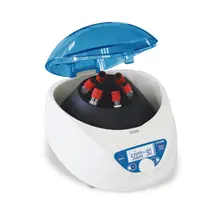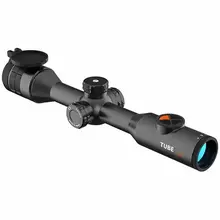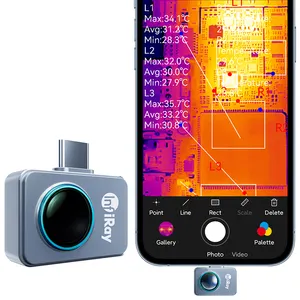Introduction to Mini Thermal Cameras
Mini thermal cameras, a compact subset of thermal imaging technology, have revolutionized the way temperature monitoring is conducted across various industries. These diminutive devices offer the unique ability to detect heat signatures from a safe distance, translating thermal energy into visible light to analyze a particular object or area. The versatility of a mini infrared camera extends to numerous applications, from security to intricate electronic system maintenance.
Types and Features
The market offers an array of small thermal cameras, each designed to cater to specific measurement needs. From the tiny thermal camera variants that are ideal for tight spaces to the mini flir camera models favored for their precision and portability, users can select based on resolution, sensitivity, and form factor. Features such as adjustable emissivity, color palettes, and connectivity options for data analysis enhance the utility of these devices.
Applications of Miniature Thermal Cameras
The application of miniature thermal cameras spans across several fields. In security, a small flir camera can be a part of a comprehensive surveillance system, providing night vision capabilities. Technicians utilize mini thermal imaging cameras for inspecting electrical components, identifying heat leaks in buildings, or troubleshooting HVAC systems. The flir scout tk mini thermal monocular serves enthusiasts in outdoor adventures, aiding in navigation and wildlife observation.
Advantages of Thermal Camera Mini Devices
Opting for a thermal camera mini model comes with numerous advantages. Their small size makes them incredibly portable, suitable for fieldwork where space and weight are at a premium. Despite their size, these cameras do not compromise on functionality, offering clear image resolution and reliable performance. The integration of a mini infrared thermal camera into existing systems is made seamless with wireless connectivity and minimal installation requirements.
Materials and Durability
Durability is a key factor in the design of small infrared cameras. Constructed to withstand the rigors of both industrial and outdoor environments, these cameras often feature robust casings and are engineered to resist environmental factors such as dust and water. The materials used are chosen for their ability to protect sensitive thermal sensors and ensure longevity of the device.
Choosing the Right Mini Thermal Camera
Selecting the right miniature infrared camera involves considering the specific requirements of the task at hand. Factors such as the required temperature range, resolution, field of view, and the need for additional features like GPS or image enhancement technologies should guide the decision. With a comprehensive selection available, finding a suitable portable thermal scanner that aligns with specific measurement needs is straightforward.






























 浙公网安备 33010002000092号
浙公网安备 33010002000092号 浙B2-20120091-4
浙B2-20120091-4